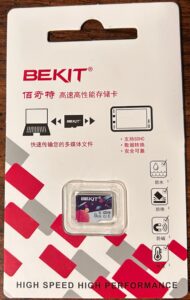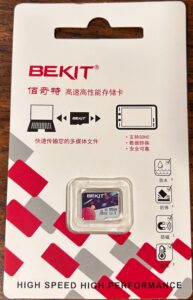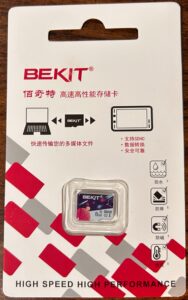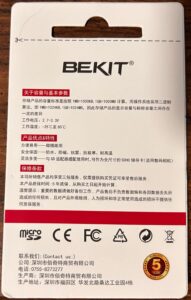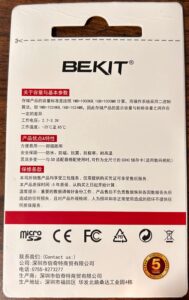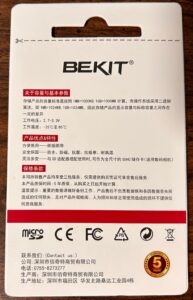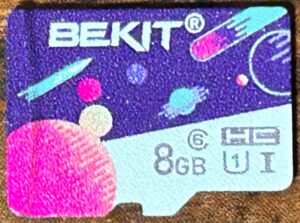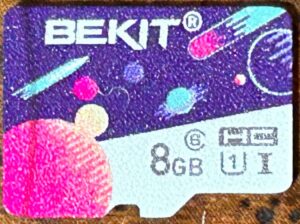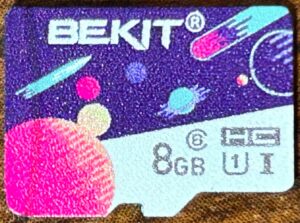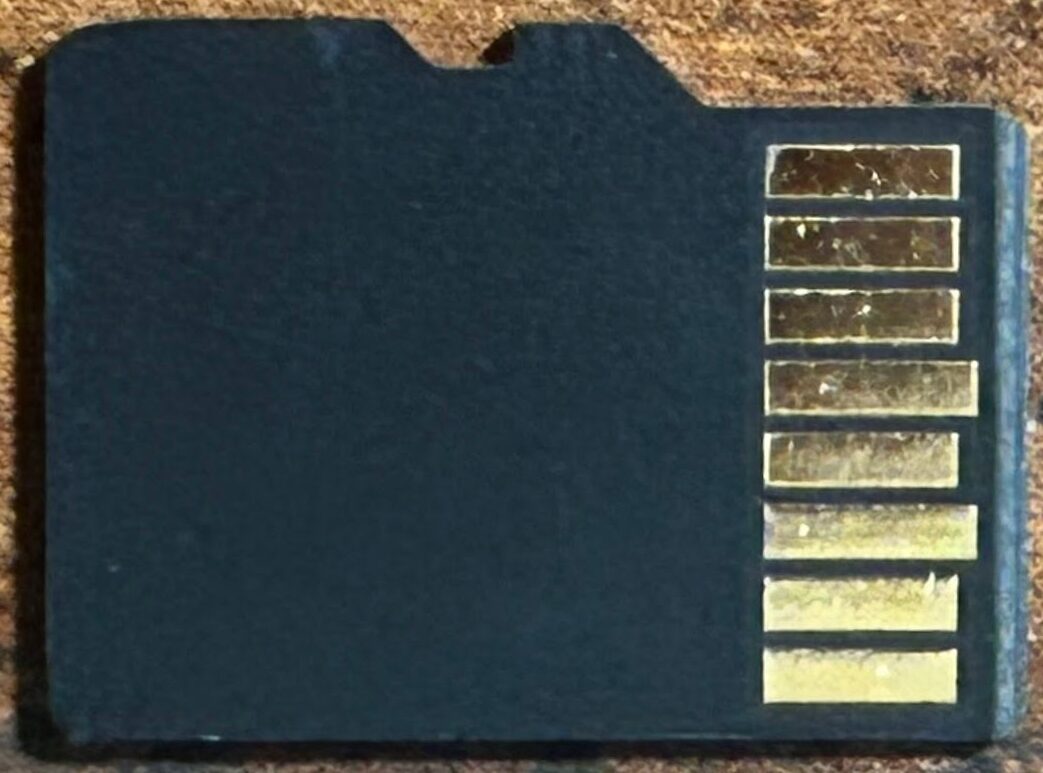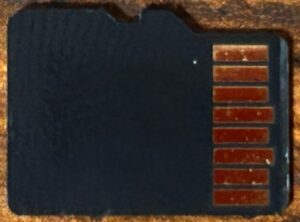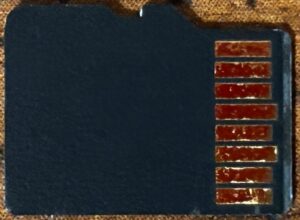- Obtained from: AliExpress
- Price paid: $3.46
- Advertised capacity: 8GB
- Logical capacity: 8,032,092,160 bytes
- Physical capacity: 8,032,092,160 bytes
- Fake/skimpy flash: No
- Protected area: 50,331,648 bytes (inaccessible)
- Speed class markings: Class 6, U1
- CID data:
- Manufacturer ID:
0xfe - OEM ID:
0x3432(ASCII:42) - Product name:
0x5344313647(ASCII:SD16G) - Product revision:
0x20 - Manufacture date: Nov 2022
- Manufacturer ID:
* I think. I didn’t specifically write down which card reader I used on any given card, so some of this is going off of memory, and some of it is going off of what the card is plugged into right now.
Discussion
This brand took a little bit more digging to find, but once it came up, the colorful design caught my attention. What can I say. (Squirrel!)
Performance was good enough to merit the speed class marks it bore, and it approached the maximum practical sequential read speed for a UHS-I-compatible card, but sequential write speeds and random I/O speeds were disappointing. Sequential read speeds were above average, but all other performance metrics were below average — with sample #3 getting a random read speed that was more than one standard deviation below average.
Sample #1 lasted just shy of 1,600 read/write cycles before it failed. Just before failure (starting with round 1,573), it experienced a few rounds where a handful of sectors had data mismatch errors. However, during round 1,583, the device spontaneously changed capacity to 127MB (specifically, to 127,139,840 bytes). At that point, I decided to consider it “dead”. I’ll note that in versions 2 and 3 of the CSD register specification, the size of the card is indicated by adding 1 to the value of the C_SIZE field, then multiplying it by 524,288. Since 127,139,840 is not a multiple of 524,288, it suggests that (at least) the portion of the card controller’s code responsible for populating the CSD register was corrupted, possibly causing it to report that it was using version 1 of the CSD register specification instead.
Here’s what the track record for the endurance tests for sample #1 looked like:
Interestingly, sample #2 also reported its capacity as 127MB right out of the package. Given that the other two cards initially reported their capacities correctly — and the fact that it would not respond to commands when plugged into my Realtek reader — I decided to declare this card “dead on arrival”.
Sample #3, on the other hand, did quite well: its first error was a corrupted data error during round 13,759. It survived 18,913 read/write before it got to the point where it would throw an error on every write attempt. It was the second card in my collection to hit 10,000 read/write cycles completed without errors (after sample #1 of the Hiksemi NEO 8GB). So I guess 1 out of 3 is…better than nothing?
Overall, I was impressed by the fact that the card did well on sequential read speeds, but this appears to be where its advantages end. The sequential write speeds and random I/O speeds were all below average, and endurance for 2 out of the 3 cards was below expectations.
My recommendation? Don’t buy these. There are better options out there.
June 16th, 2024


